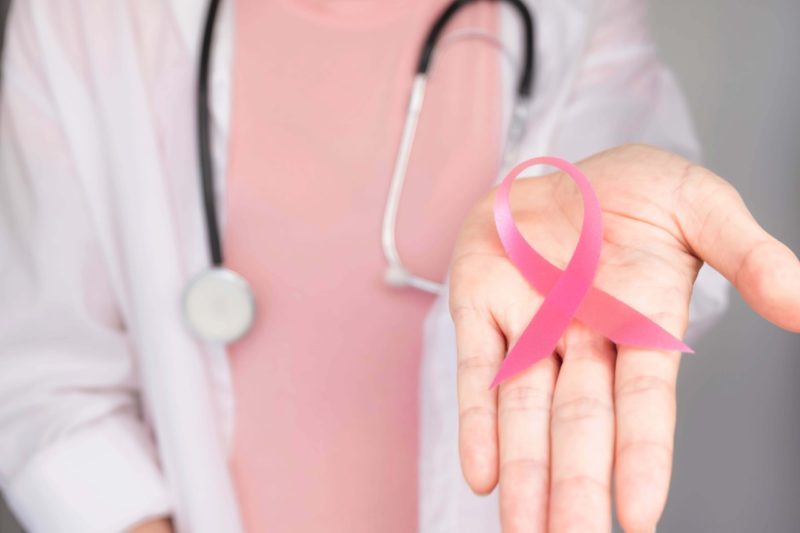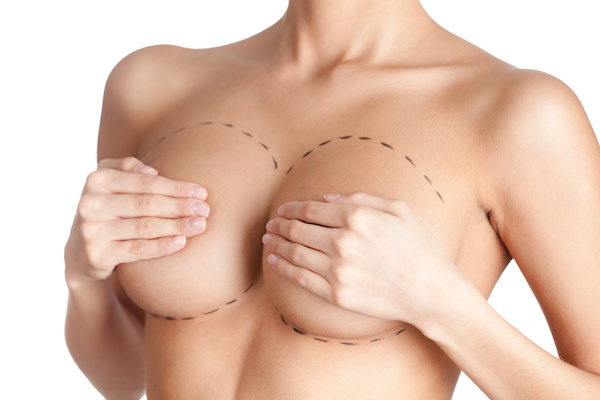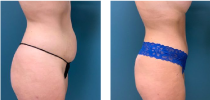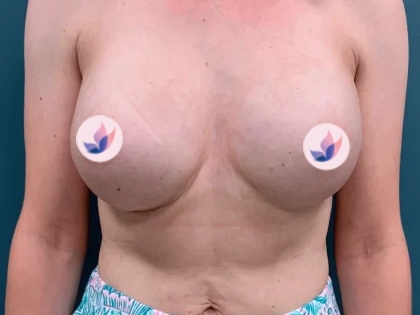Breast Reconstruction
Conveniently located to serve the areas of Lexington, Cincinnati, Knoxville and Northern, KY

Many women who suffer from breast cancer often need to have one or both breasts completely removed as a part of their breast cancer treatment. Being robbed of a key part of the female body can be emotionally traumatizing. Thankfully, breast reconstruction can help restore an individual’s sense of self, and in doing so, it can improve one’s own self-image, confidence, and overall quality of life.
If you are in the midst of breast cancer treatment or recovery, it’s important to understand all of your mastectomy and reconstruction options. Plastic Surgeons of Lexington is pleased to provide you the personalized care you deserve. Call us today.
Before and After Photos
View More PhotosContents
- 1 Before and After Photos
- 2 Achieved with Breast Reconstruction Surgery
- 3 Types of Breast Reconstruction Following Mastectomy
- 4 Frequently Asked Questions
- 4.1 How much pain will I experience after breast reconstruction?
- 4.2 Is the cost of breast reconstruction covered by insurance?
- 4.3 Do I have to undergo breast reconstruction?
- 4.4 Can I have breast reconstruction for only one breast?
- 4.5 How much scarring can I expect after breast reconstruction?
- 4.6 What is the TRAM flap procedure?
- 4.7 Should I have immediate or delayed breast reconstruction?
- 4.8 How long will the recovery take after breast reconstruction?
- 4.9 Which procedure is best for me: Autologous, Implant, or Combination?
Achieved with Breast Reconstruction Surgery
Restored Femininity
Having breasts is a physical manifestation of femininity and womanhood. The loss of one or both breasts can make you feel like you have lost your femininity. Breast reconstruction gives you back that physical sign of being a woman.
Improved Shape & Self-Image

The breasts play a critical role in defining a woman’s body shape. By undergoing breast reconstruction after mastectomy, your body shape will appear more feminine. This will help you feel more comfortable with your body and improve your self-image.
Emotional Healing
The experience of going through a mastectomy for breast cancer may cause intense emotional trauma and distress. Emotional healing is possible through breast reconstruction by restoring a key feature of femininity and one’s sense of self. Reconstruction of the breast(s) can help you move past your breast cancer diagnosis so that you can move forward with life.
Restored Confidence
Undergoing a mastectomy can shake your self-confidence because it removes a portion of your body that has helped define who you are. Breast reconstruction can not only recreate your feminine body shape, but doing so can also restore your confidence in yourself and in life.
Types of Breast Reconstruction Following Mastectomy
Autologous Reconstruction
- Harvests tissue from your abdomen, thigh, or buttock to reconstruct the breast
- Includes a construct of skin, fat, and potentially muscle
- Can recreate the mound of the breast immediately following the mastectomy
- The nipple and areola are reconstructed at a second stage
- Two surgical sites
Implant Reconstruction
- Usually requires the insertion of a tissue expander after the mastectomy followed by weeks to months of tissue expansion
- At a secondary procedure, the expander is removed and a breast implant is inserted
- The nipple and areola are reconstructed at a third operative intervention
- One surgical site
- Despite at least three surgical steps, overall recovery is the quickest
Combination Procedure
- Uses tissue from your upper back to create a tissue construct of skin, fat, and muscle as well as a breast implant to reconstruct the breast mound (sometimes two steps)
- The nipple and areola are reconstructed at a second (or third) operative intervention
- Two surgical sites
Frequently Asked Questions
How much pain will I experience after breast reconstruction?
Immediately after your procedure, you will experience some pain and discomfort at the surgical site(s). Your surgeon will prescribe you medications to help you manage this pain. As an example, most of the pain and discomfort after placement of a tissue expander should subside within two to three weeks of the procedure.
Is the cost of breast reconstruction covered by insurance?
Breast reconstruction is covered by medical insurance as required by federal law.
Do I have to undergo breast reconstruction?
No one is required to undergo breast reconstruction. However, women who choose to undergo breast reconstruction find that it helps restore their self-image, confidence, and overall quality of life. Women who are interested in breast reconstruction should discuss their options with their cancer surgeon and a Board Certified plastic surgeon.
Can I have breast reconstruction for only one breast?
Choosing to have one or both breasts removed after a diagnosis of one-sided breast cancer is a personal decision. When you choose to only treat the affected breast with a mastectomy, breast reconstruction can be performed on that affected side in an effort to match your natural breast. Sometimes, a breast enhancement procedure such as a breast augmentation, lift, or reduction can be performed on the unaffected breast to make the breasts as symmetrical as possible.
How much scarring can I expect after breast reconstruction?
Breast reconstruction will leave scars in all the affected areas. If other body areas are used for breast reconstruction, such as the abdomen or upper back, scars will be located in those areas as well. Typically, scars heal well and are not a problem. Moreover, scars can be well-hidden. Most women consider them a small price to pay because breast reconstruction helps give them back their feminine body shape and helps restore their self-confidence.
What is the TRAM flap procedure?
The TRAM flap stands for transverse rectus abdominus myocutaneous flap and uses skin, fat, and muscle from the abdominal wall to create a tissue flap for breast reconstruction. This is the most common method of conducting autologous breast reconstruction. A similar flap can be created that does not require sacrifice of the rectus abdominus muscle, called a deep inferior epigastric flap (DIEP).
Should I have immediate or delayed breast reconstruction?
Your unique factors will largely determine whether you should undergo immediate or delayed breast reconstruction. Influential factors include your cancer stage, other treatments you are undergoing, your lifestyle, your medical health, your preferences, and how you are doing emotionally. Each option has pros and cons. For example, those who undergo immediate autologous breast reconstruction may have a more difficult initial recovery. On the other hand, those undergoing immediate reconstruction report improved psychological well-being knowing that their breast reconstruction has gotten underway. Your surgeon will give you more details about each of these options during your consultation.
How long will the recovery take after breast reconstruction?
The length of your recovery will depend on the type of breast reconstruction technique you choose. TRAM flaps typically require a several-day hospital stay, and the initial recovery may take a few weeks to a month. Implant-based breast reconstruction is typically an easier and shorter recovery, despite being at least several steps. After the initial expander placement, it typically takes two weeks to recover, while the second and third steps take one week and days, respectively.
Which procedure is best for me: Autologous, Implant, or Combination?
Personal factors will help you and your surgeon determine which procedure type is best for you. Ultimately, the procedure will be custom-designed for your needs, and your surgeon will help determine which is best for you during your consultation.
Schedule your initial consultation with Plastic Surgeons of Lexington by calling us. Our Board Certified and Board Eligibile plastic surgeons perform breast reconstruction and other breast procedures for patients throughout Kentucky.













